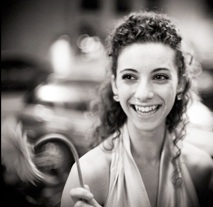Yoga Tips for Tango Dancers
/3 Cues that Translate to the Dance Floor
By Sharna Fabiano
Increasingly, social dancers are looking to various forms of physical conditioning to refine their balance, posture, and flexibility on the dance floor. This article zooms in on yoga as one of those disciplines, and lists three details that can help you choose a yoga class that will most benefit your tango, or make whatever yoga class you’re already in benefit your tango more. These tips are meant as a guideline - every person is unique and only you know what is best for your body.
1. Slow Down for Better Balance - In contrast to the fast-paced Vinyasa Flow style yoga, slower classes that ask you to hold poses for several breaths at a time might appear to be less intense. In truth, it’s just a different kind of effort. When you hold poses longer and deepen your breathing, your body and mind have more of a chance to synchronize. This increased physical awareness helps to cultivate the sustained attention we need to give to our partner and to the music when dancing tango. Deep breathing and long holds also cue your stabilizing muscles to kick in. These are the ones we need for the precise weight shifts and improvised timing so characteristic of sophisticated tango.
2. Squeeze your Rear for an Elegant Walk - Sometimes the gluteal (rear) muscles get left out of the game in a yoga class. As tango dancers, especially in the following role, we desperately need these muscles for long, powerful back steps (forward and side steps, too). In addition to developing elegant legwork, strong glutes also support your lower back so that it doesn’t work so hard to hold you up. Because tango is a walking dance, the low back takes a lot of abuse, and engaging the rear muscles can make a big difference. Squeeze your rear in standing poses such as Warrior I, Warrior II, and Chair Pose. Standing balances such as Half moon and Warrior III will also get a boost with a little squeeze. Make sure you do not curve your lower spine when you contract your glutes - focus on the muscular action itself.
3. Engage your Abs for an Awesome Embrace - Draw your lower ribs downward toward your front hip points to engage your abdominal muscles. You can incorporate this action into almost any movement in a yoga class, but it’s especially useful in movements where your torso shifts away from vertical. (for example, lying on your back, lying on your belly, in a plank position facing the ground, or when side bending or back bending). Working your abdominal muscles is supportive for general posture, and can prevent lower back strain. As tango dancers, posture is the most influential factor in connecting with a partner. It determines both how balanced you feel to yourself, and how comfortable you feel to others in any style of embrace.
Want more? Ladies can check out Sharna's Women's Tango Circles, combining yoga and tango in one holistic evening!






